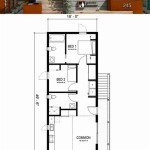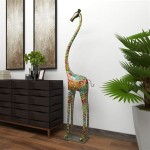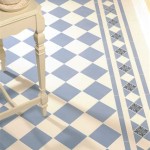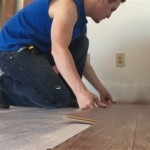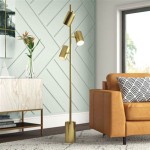Non-Slip Shower Floor Ideas: Enhancing Safety and Style
Shower floors, often composed of tile, acrylic, or stone, can present a slip hazard, particularly when wet. Preventing falls in the shower is a critical element of bathroom safety, and a variety of solutions exist to mitigate this risk. Integrating non-slip features doesn't necessarily require sacrificing aesthetics; numerous stylish and functional options are available. This article explores various non-slip shower floor ideas, focusing on materials, treatments, and designs that prioritize safety and aesthetic appeal.
Tile Selection with Texture and Slip Resistance
The choice of tile is paramount when designing a safer shower floor. Certain tile types and finishes naturally offer enhanced slip resistance. The slip resistance of tiles is generally quantified by a coefficient of friction (COF) rating. A higher COF indicates greater slip resistance. For shower floors, a COF of 0.6 or higher is generally recommended by safety standards and building codes. This rating signifies that the tile provides adequate traction even when wet.
Considerations for Tile Selection:
* Porcelain Tiles: Porcelain tiles are a dense and durable option suitable for wet environments. Unglazed porcelain tiles, often marketed as "through-body" or "homogenous" tiles, possess inherent slip resistance due to their textured surface. These tiles maintain their anti-slip properties even when the surface is worn. Look for tiles with a textured or matte finish rather than polished or glossy surfaces, which become slippery when wet. * Mosaic Tiles: Small mosaic tiles, especially those composed of natural stone or textured ceramic, offer increased slip resistance due to the numerous grout lines. These grout lines create more friction for the feet, effectively reducing the risk of slipping. The small size of mosaic tiles also conforms better to sloping shower floors, improving water drainage and further minimizing slip hazards. * Stone Tiles: Natural stone tiles like slate, travertine, and sandstone often have inherent texture that enhances grip. However, it's crucial to select stones with naturally rough surfaces and avoid polished versions, as polishing can negate the slip-resistant properties. Sealing stone tiles is essential to prevent water absorption and staining, but the sealer should not compromise the tile's texture. * Textured Ceramic Tiles: Ceramic tiles with embossed patterns or textured surfaces are specifically designed for wet areas. These textures provide added grip and improve slip resistance. Various patterns and finishes are available, allowing homeowners to match the aesthetics of their bathroom while prioritizing safety.When selecting tiles, consult the manufacturer's specifications and COF ratings to ensure the tiles meet safety standards for wet environments. Request samples to test the texture and slip resistance firsthand, especially when wet.
Application of Anti-Slip Treatments and Coatings
Even if the existing shower floor consists of smooth tiles or other materials, it's possible to enhance slip resistance through the application of anti-slip treatments or coatings. These products create a microscopic texture on the surface, increasing friction without significantly altering the appearance. Several types of anti-slip treatments are available, each with varying application methods and durability.
Types of Anti-Slip Treatments:
* Chemical Etching Solutions: Chemical etching solutions react with the surface of tiles, creating microscopic pores that increase friction. These solutions are typically applied to ceramic or porcelain tiles and require careful application according to the manufacturer's instructions. It's essential to thoroughly clean the surface before application and to rinse the treated area thoroughly afterward. Chemical etching solutions can effectively improve slip resistance, but the effect may diminish over time with wear and tear, requiring periodic reapplication. * Acrylic Coatings: Acrylic coatings are applied as a thin layer over the existing surface, creating a non-slip barrier. These coatings are available in different finishes, including clear and textured options. Acrylic coatings are relatively easy to apply but may not be as durable as chemical etching solutions. They may also require periodic reapplication as the coating wears down. The choice of coating should be compatible with the shower floor material to ensure proper adhesion and longevity. * Epoxy Coatings: Epoxy coatings are more durable and resistant to chemicals and water than acrylic coatings. They provide a thicker, more resilient non-slip layer. Epoxy coatings are typically used in commercial settings but are also suitable for residential showers. Application requires careful surface preparation and proper mixing of the epoxy components. Epoxy coatings can offer long-lasting slip resistance but may alter the appearance of the shower floor more significantly than other treatments. * Non-Slip Tapes and Mats: While not a permanent solution, non-slip tapes and mats provide immediate slip resistance in specific areas of the shower. These products are typically made of rubber or vinyl and have a textured surface to enhance grip. Non-slip tapes are applied directly to the shower floor, while mats can be placed and removed as needed. These options are convenient for temporary solutions or for adding extra slip resistance to specific areas, such as near the showerhead or seat. However, tapes and mats require regular cleaning to prevent mildew and bacteria growth.When selecting an anti-slip treatment, consider the type of shower floor material, the desired level of slip resistance, and the ease of application. Follow the manufacturer's instructions carefully and test the treated area before regular use to ensure adequate slip resistance.
Innovative Shower Floor Designs and Features
Beyond material selection and surface treatments, innovative shower floor designs and built-in features can significantly enhance safety and prevent slips. These designs often integrate principles of ergonomics and biomechanics to maximize grip and minimize the risk of falls. Incorporating these features during the initial design or renovation of a shower can provide long-term safety benefits.
Design and Feature Considerations:
* Textured Shower Bases: Pre-fabricated shower bases with built-in textured surfaces offer a convenient and reliable non-slip solution. These bases are typically made of acrylic or fiberglass and have a raised pattern or textured finish that provides excellent grip. Textured shower bases are available in various sizes and shapes, making them suitable for different bathroom layouts. The integrated texture eliminates the need for additional treatments or coatings. * Sloping Shower Floors: Proper sloping of the shower floor is essential for efficient water drainage. A slight slope, typically ¼ inch per foot, ensures that water quickly drains away from the standing area, reducing the risk of slips. When water pools on the surface, it creates a slippery film that can increase the likelihood of falls. Ensure the shower floor has adequate slope towards the drain to prevent water accumulation. * Channel Drains: Linear channel drains, also known as trench drains, offer superior water drainage compared to traditional circular drains. These drains extend across the width of the shower, allowing water to drain quickly and efficiently. Channel drains can be installed flush with the shower floor, creating a seamless and accessible surface. The improved drainage reduces the risk of water pooling and slipping. * Grab Bars and Shower Seats: While not directly related to the floor, grab bars and shower seats provide additional support and stability, reducing the risk of falls. Grab bars should be strategically placed within the shower to assist with standing and maneuvering. Shower seats allow users to sit comfortably while showering, reducing the strain on their legs and improving balance. These features are particularly beneficial for individuals with mobility issues or those who are at a higher risk of falling. * Heated Shower Floors: Radiant heating systems beneath the shower floor can help to dry the surface quickly after use, further reducing the risk of slips. Heated floors also provide added comfort, making the shower experience more enjoyable. The heat evaporates water more quickly, preventing the formation of a slippery film on the surface.By integrating these design elements and features, the safety and accessibility of a shower can be greatly improved. These innovations prioritize both functionality and aesthetics, creating a safer and more comfortable bathing environment.
Ultimately, creating a non-slip shower floor requires a multifaceted approach. Choosing the right materials, applying appropriate treatments, and incorporating thoughtful design elements are all crucial steps. By carefully considering these factors, homeowners can significantly reduce the risk of falls in the shower while maintaining the aesthetic appeal of their bathroom.

Best Shower Floor Tiles Non Slip Ideas 2025 Updated Country Floors

Best Shower Floor Tiles Non Slip Ideas 2025 Updated Country Floors

How To Make A Tiled Shower Floor Less Slippery

Best Shower Floor Tiles Non Slip Ideas 2025 Updated Country Floors

Shower Floor Tile Pebble Mosaic More The Shop

Shower Floor Tile Pebble Mosaic More The Shop

Safety Meets Style 5 Best Shower Floor Tile Ideas

Best Shower Floor Tiles Non Slip Ideas 2025 Updated Country Floors

La Design Construction Pro Tips Expert Remodeling Contractor Advice

Pebble Tile Shower Floor 101 How To Use Them Stone
